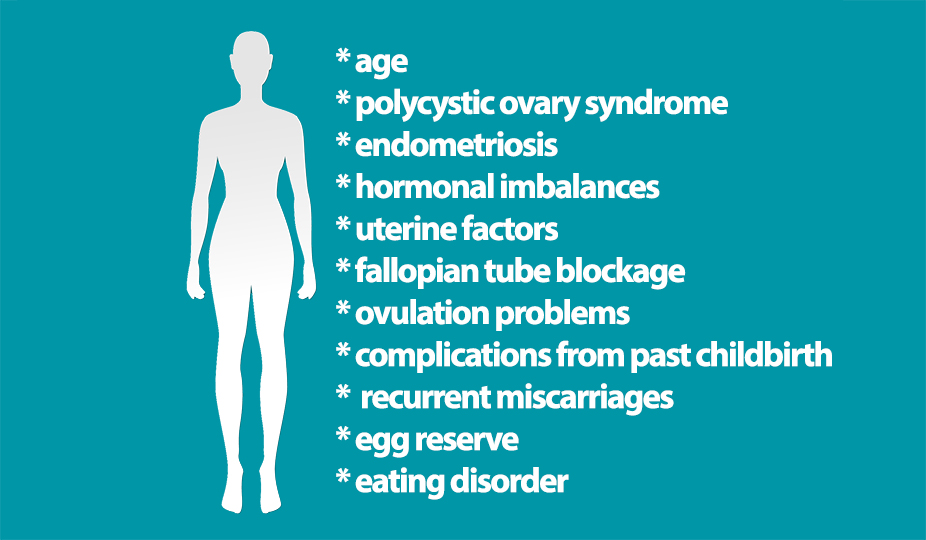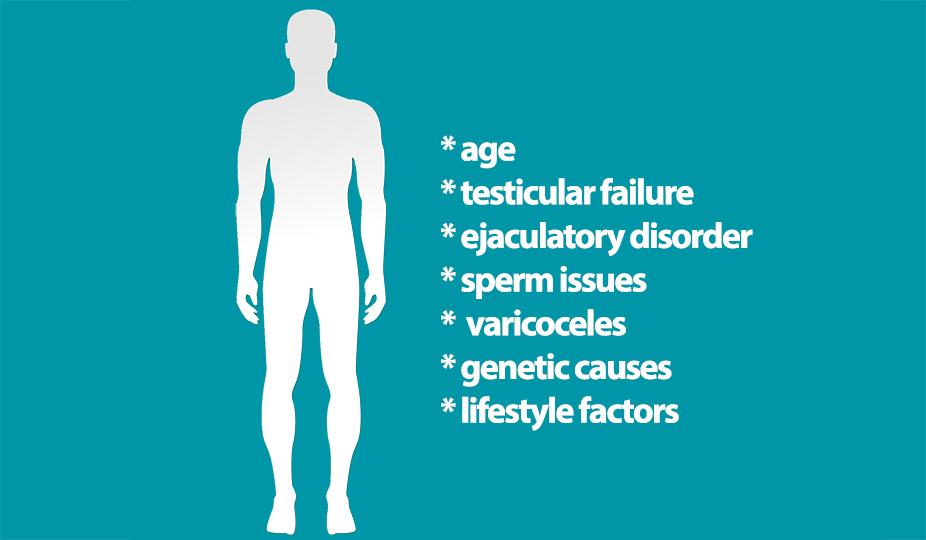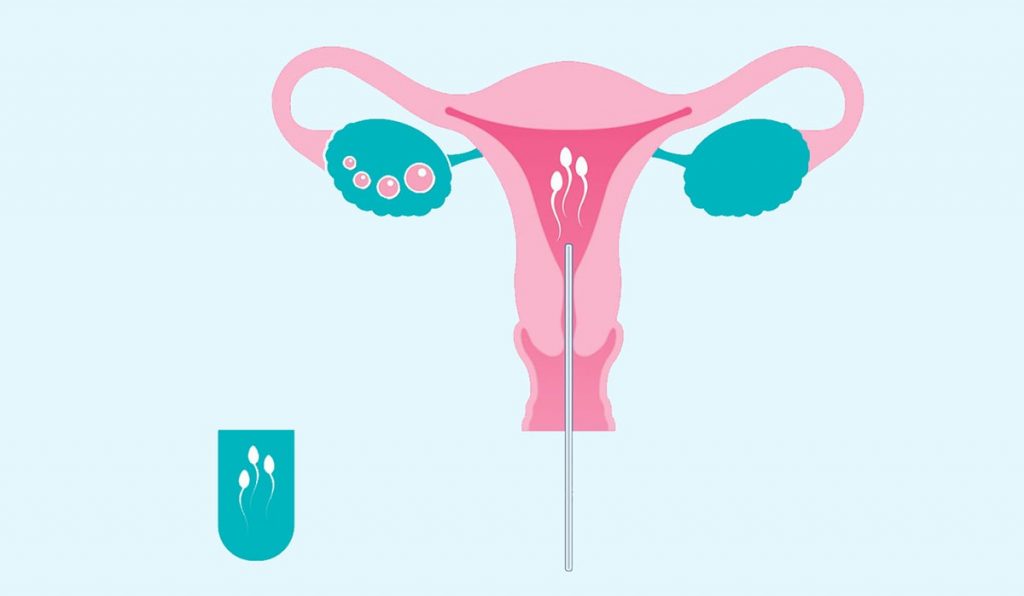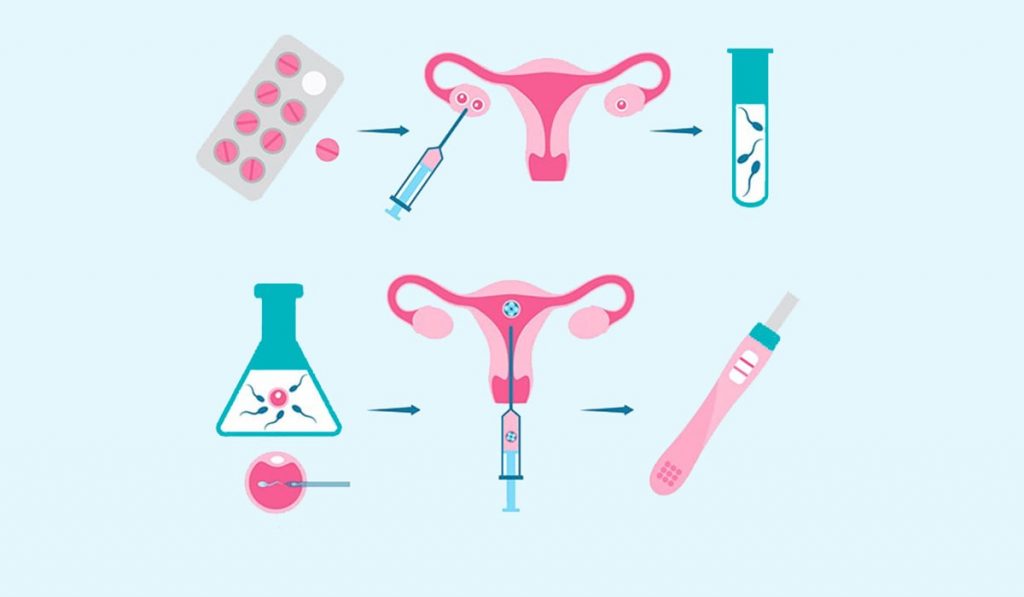Secondary Infertility – Main Causes, Diagnosis, Treatment
We often think that just first-time parents can challenge infertility. However, a lot of couples struggle with fertility issues only when they are trying to get pregnant for the second time. The inability to conceive, or carry to term, after a previous pregnancy is a secondary infertility. Both men and women face the possibility of secondary infertility. The causes include impaired sperm production, function or delivery in men and fallopian tube damage, ovulation disorders, endometriosis and uterine conditions in women. In order to know more about secondary infertility symptoms, we will overview them more precisely for both women and men.

Common Causes of Secondary Infertility
Often problems getting pregnant for a second or subsequent time can be caused by complications that occurred in a prior pregnancy. Other risk factors like changes in health, weight, lifestyle, or medication could also be factors that you need to consider carefully. Numerous things can affect both men’s and women’s fertility so that we will check the causes for both partners.
Main Factors of Secondary Female Infertility
According to the statistics, about one-third of infertility cases are related to male infertility, another third are related to female infertility, and another third are related to problems in both the man and woman or remain unexplained. Don’t postpone getting help. Some causes of secondary infertility can worsen over time. The sooner you seek medical advice, the better.

- age (fertility decreases in women over 35);
- polycystic ovary syndrome (PCOS is a hormonal disorder, a set of symptoms due to elevated androgens (male hormones) in females;
- endometriosis (a disease in which tissue that normally lines the inside of your uterus grows outside);
- hormonal imbalances ( the process when your body isn’t getting enough or getting too much of a specific hormone);
- uterine factors (abnormalities of the uterus that prevent women from getting pregnant);
- fallopian tube blockage (blocked fallopian tubes are unable to let the ovum and the sperm converge, thus making fertilization impossible);
- ovulation problems (irregular, painful and heavy periods or absence of menstruation);
- complications from past childbirth;
- miscarriage (spontaneous abortion and pregnancy loss, is the natural death of an embryo or fetus before it can survive independently);
- recurrent miscarriages (if you have had two or more miscarriages);
- abortion ( the ending of a pregnancy by removal or expulsion of an embryo or fetus);
- egg reserve (the capacity of the ovary to provide egg cells that are capable of fertilization resulting in a healthy and successful pregnancy);
- lifestyle habits (addictions to alcohol, smoking, alcohol, drugs);
- eating disorder (weight gain or underweight);
Main Factors of Secondary Male Infertility
Furthermore, It is also essential to know that there are a variety of conditions that may lead to male infertility. Thus the man contributes to infertility in around half of all cases. In most cases, there are no apparent signs of infertility, and man requires medical tests to help find out the cause of infertility.

Here are the most common ones.
- age (fertility decreases for man after the age of 40);
- testicular failure (the inability of the testicles to produce sperm and the male hormone testosterone);
- ejaculatory disorder (premature, retarded or retrograde ejaculation). Premature ejaculation occurs before or very soon after penetration. Retarded ejaculation happens when ejaculation is slow to occur. Retrograde ejaculation occurs when, at orgasm, the ejaculate is forced back into the bladder rather than through the urethra and out the end of the penis.
- sperm issues (low or absent sperm count, problems with sperm shape, movement, delivery);
- varicoceles (an enlarged vein in the scrotum and testicle, usually found on the left side);
- lifestyle factors, such as obesity or smoking;
- genetic causes (chromosomal conditions that affect the way that sperm is produced
- unexplained.
Due to the modern development of medicine, there is no need to worry if you have secondary infertility. Proper medical examination and treatment will help to have a family of your dream with a lot of children.
Diagnosis and Management for Secondary Infertility
It’s important for both the man and woman to have a complete infertility workup as soon as they feel they’re having trouble conceiving. From diagnosis, your doctor will present and explore options for figuring out what is causing secondary infertility and how to treat that specific issue or issues.

Diagnosis for Women
- Ovulation testing.
- Blood test (It is used to check your levels of follicle-stimulating hormone, which triggers your ovaries to prepare an egg for release each month).
- Urinalysis (it is a group of physical, chemical, and microscopic tests using your urine).
- Hysterosalpingogram (is a series of X-rays of your fallopian tubes and uterus).
- Transvaginal ultrasound (is a type of pelvic ultrasound used by doctors to examine female reproductive organs).
- Laparoscopy. It is a minimally invasive surgical procedure. The surgeon examines the pelvic anatomy for causes of female infertility with the help of a laparoscope.
- Hysteroscopy. It allows direct visualization of the uterine cavity and the endometrial mucus.
Diagnosis for Men
Usually, a basic semen analysis is all that’s needed to diagnose male secondary infertility. Also, medical history and physical examination are standard assessments for all men. However, further testing may include the following.
- Semen analysis. This relatively simple test involves the man providing a semen sample for a lab to evaluate. The lab uses this sample to measure the amount of semen and the number of sperm and to evaluate sperm shape and movement. Ideally, the test should be performed at least twice to confirm results.
- A general physical exam by the urologist. Semen analysis, including genetic testing of the sperm (looking for the presence of antibodies) and evaluation of immobile sperm (to see if they are dead or alive).
- Blood work to check hormone levels, usually of FSH and testosterone, but sometimes also LH, estradiol, or prolactin.
- Genetic karyotyping (also known as chromosome analysis, is testing that can reveal certain genetic abnormalities).
- Post-ejaculatory urinalysis.
- Testicular biopsy (takes a tissue sample from your testicle for laboratory analysis).
- Vasography.
Vasography is an X-ray study of the vas deferens (part of the male reproductive system) to see if there is a blockage, oftentimes in the context of male infertility.
It is worth remembering that secondary infertility is treatable, and many women diagnosed with it go on to have successful subsequent pregnancies. The main thing is to seek medical attention.
The Most Effective Ways of Secondary Infertility Treatment
Secondary Infertility treatment depends on the cause, your age, how long you’ve been infertile, and personal preferences. Treatments can either attempt to restore fertility through medication or surgery or help you get pregnant with sophisticated techniques.
There are various treatment options according to the woman’s specific fertility profile, including Intrauterine Insemination (IUI), In Vitro Fertilization (IVF), Egg donation.
Intrauterine Insemination (IUI)
Intrauterine insemination (IUI) is a form of treatment where sperm is inserted into the uterine cavity around the time of ovulation.

In-Vitro Fertilization (IVF)
In vitro fertilization (IVF) is a process of fertilization where doctors combine the egg with sperm outside the body. The process involves monitoring and stimulating a woman’s ovulatory process, removing an egg or eggs from the woman’s ovaries and letting sperm fertilize them in a liquid in a laboratory.

Egg Donation
Egg donation is the process by which a woman donates eggs to enable another woman to conceive as part of an assisted reproduction treatment or for biomedical research.

No matter which treatment path you pursue, you should have hope that we are here for you and you can overcome secondary infertility with just a little bit of help.
Do not hesitate to contact Sunshine Egg Donation Agency. We will do our best to make your family happier!